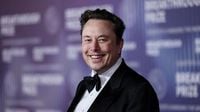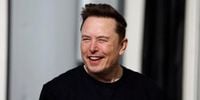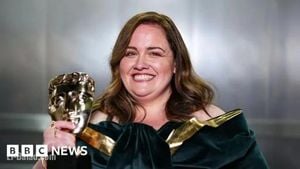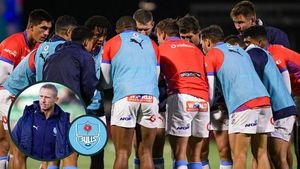Tesla’s annual shareholder meeting in Austin, Texas, on November 6, 2025, was anything but ordinary. The electric vehicle giant, led by its ever-controversial CEO Elon Musk, put forth a proposal that could see Musk pocket a staggering $1 trillion in stock over the next decade—if, and only if, some of the most ambitious targets in corporate history are met. For investors and onlookers alike, the drama was palpable, with the outcome poised to shape not just Tesla’s future, but the landscape of executive compensation for years to come.
The event, which kicked off just after 4:15 p.m. ET, drew a limited crowd in person but reached a far larger audience via livestream. Tesla’s shareholder meetings have become must-watch affairs, with this year’s edition raising the stakes higher than ever. The central issue: whether Musk should receive 425 million incentive-laden shares, vesting only upon meeting a series of daunting financial and operational milestones by 2035. If all are achieved, the payout would make Musk the first person to earn $1 trillion from a single company, according to CNBC.
The numbers are mind-boggling. Tesla’s current market capitalization stands at approximately $1.4 trillion, having risen about 13% in 2025. The new pay package requires Tesla to reach an $8.5 trillion market cap and $400 billion in annual earnings before interest, taxes, depreciation, and amortization (EBITDA)—targets that would require the company’s value to compound at roughly 20% per year for the next decade, as reported by Barron’s. To put that in perspective, Tesla’s expected EBITDA for 2025 is around $13 billion, meaning it would have to expand more than thirtyfold to meet the final milestone.
But it’s not just about the money. The operational benchmarks are equally audacious. Tesla must cumulatively sell 20 million electric vehicles, rack up 10 million subscriptions to its Full Self Driving (FSD) product, deploy 1 million robotaxis, and deliver 1 million humanoid robots. As of now, Tesla has sold about 8.5 million cars in its lifetime, has a few hundred robotaxis on the roads, but has yet to sell a single robot. Achieving these goals would require Tesla to not only maintain its lead in electric vehicles but also radically scale its artificial intelligence and robotics capabilities.
The proposal has deeply divided the investment community. On one side are Musk’s ardent supporters. Retail investors, who make up a substantial portion of Tesla’s base, have historically rallied behind the CEO. John Stringer, founder of Tesla Owners of Silicon Valley, summed up the prevailing sentiment among Musk’s loyalists in a quote to Business Insider: “Everyone is super excited and pumped. No one can really understand why people would vote against it if they own the stock.” Board Chair Robyn Denholm, in an October letter to shareholders, warned that failing to approve the package could result in Musk leaving the company, a move she argued would cost Tesla “significant value.”
Major institutional investors have also weighed in, with some of Tesla’s most bullish backers—such as ARK Invest’s Cathy Wood and Baron Capital—expressing support. Ron Baron, founder of Baron Capital, wrote on X, “Elon is the ultimate ‘key man’ of key man risk. Without his relentless drive and uncompromising standards, there would be no Tesla.”
But not all are convinced. Proxy advisory firms ISS and Glass Lewis urged shareholders to reject the package, citing concerns over the sheer size of the award, potential dilution, and the lack of safeguards against the risks posed by Musk’s outsize influence. Norges Bank Investment Management, which manages Norway’s $2 trillion sovereign wealth fund and is one of Tesla’s largest shareholders, announced its opposition, stating, “While we appreciate the significant value created under Mr. Musk’s visionary role, we are concerned about the total size of the award, dilution, and lack of mitigation of key person risk.”
Corporate governance advocates added their voices to the chorus of dissent. James McRitchie, a Tesla-driving shareholder advocate, told CNBC, “Tesla has all these fanboys. So many retail investors bought the stock because they love the cars. There’s a lot to love there, but you should also pay attention to the finances and risks.” Nell Minow, chair of ValueEdge Advisors, was even more direct: “If they said we’re going to pay him a trillion dollars, but he’s going to give up all of his outside activities, he’s going to shut up about politics, and really spend all this time making this a great company, then I’d say, OK, let’s talk about it. But he’s not doing any of those things.”
The stakes are heightened by Musk’s own comments about control. He has repeatedly stated that he wants to maintain at least a 25% equity stake in Tesla to ensure he can continue developing AI and robotics within the company. “I just don’t feel comfortable building a robot army here and then being ousted because of some asinine recommendations from ISS and Glass Lewis,” Musk said during a recent earnings call. The new pay package would allow him to unlock additional shares, increasing his stake from about 13% to roughly 25% if all milestones are hit.
This year’s vote also differed from previous years in a crucial way: Musk and his brother Kimbal were permitted to vote on the pay package, further increasing the odds of its passage. The company’s recent move of its incorporation from Delaware to Texas meant that, unlike the 2018 pay package, this vote was not limited to “disinterested stockholders.”
Beyond Musk’s compensation, shareholders voted on 14 proposals, including whether to reelect three board members and whether to authorize a Tesla investment in xAI, Musk’s artificial intelligence startup responsible for the chatbot Grok. If approved, the board would determine the “amount and form” of the investment, underscoring the growing entanglement of Musk’s various ventures. Tesla’s board took a neutral stance on this proposal, likely to avoid future legal challenges.
The company did not shy away from promoting the importance of the vote, flooding X.com with ads and launching a dedicated website urging investors to “vote NOW.” As board chair Denholm put it: “The fundamental question for shareholders at this year’s Annual Meeting is simple: Do you want to retain Elon as Tesla’s CEO and motivate him to drive Tesla to become the leading provider of autonomous solutions and the most valuable company in the world?”
As the votes were tallied, the outcome seemed all but certain. With Musk’s significant ownership, the support of retail investors, and the ability for Musk and his brother to cast their votes, the opposition faced an uphill battle. The results, expected to be announced after the meeting, will reverberate far beyond Tesla’s headquarters—and could set a new precedent for executive pay in the tech industry and beyond.
Whatever the outcome, one thing is clear: Tesla’s future, and perhaps the future of corporate governance itself, is being written in real time, with Elon Musk once again at the center of the storm.





